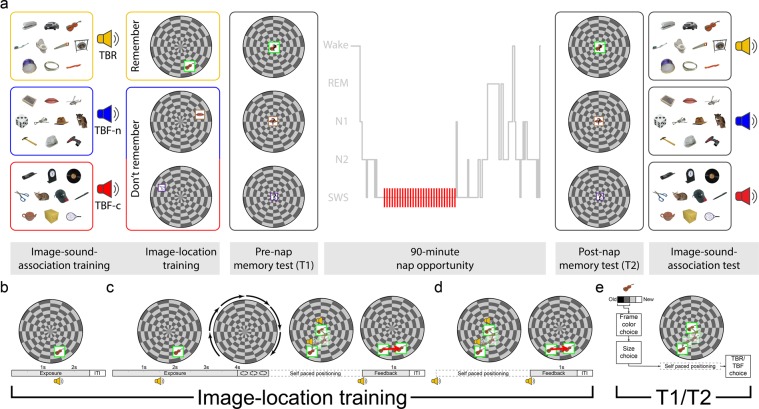Figure 1.
Experimental design. Participants first learned to associate three sets of ten images with three corresponding sounds. Next, each sound was associated with instructions to either remember the location, along with other features of the image (to-be-remembered, TBR), or not commit them to memory (to-be-forgotten, TBF). In the following image-location training stage, each image was presented in a random location on a circular grid. This was followed by a pre-nap memory test, in which image memory for these features was tested for all items (participants were explicitly instructed to try their best even for TBF items). During NREM in the subsequent 90-minute nap opportunity, participants were presented with the TBF-c (to-be-forgotten – cued) sound, but not the TBF-n (to-be-forgotten – not-cued) sound or the TBR sound, at unobtrusive levels. After waking up, the participants were again tested on their memories for both image-location and image-sound associations. The hypnogram shows actual data for one of the participants. Images presented in this figure are similar to the ones used in the experiment itself, were obtained from the Bank of Standardized Stimuli (BOSS; https://sites.google.com/site/bosstimuli)38 and are licensed under the terms of Creative Commons Attribution-Share Alike 3.0 license (http://creativecommons.org/licenses/by-sa/3.0/).

